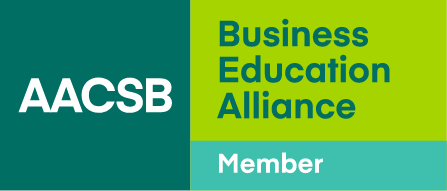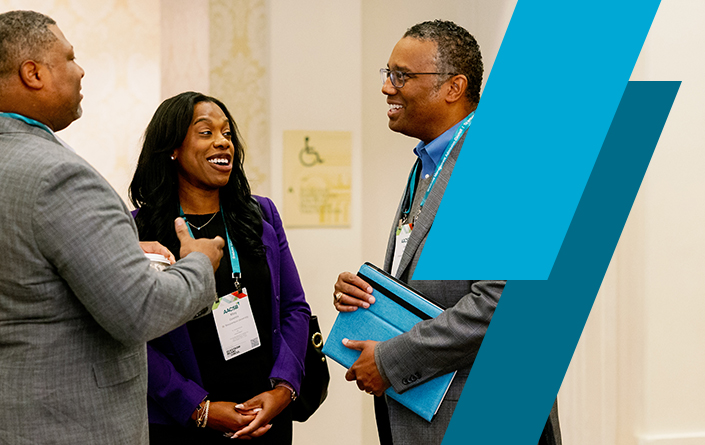Keeping the Curriculum Current in a Changing World
- To keep up with technology, Gies College of Business at the University of Illinois Urbana-Champaign has embraced digital avatars that can be easily updated to help deliver content.
- The school maintains relationships with corporate partners who provide business insights, recruit students, deliver guest lectures, and participate in class projects.
- Instead of undergoing massive, infrequent curriculum overhauls, the school engages in continuous updates to its courses and programs.
The business world is evolving at an unprecedented rate due to technological advancements, shifting workplace dynamics, economic volatility, and changing societal needs. How can business schools ensure that our curricula remain relevant and responsive so we can fulfill our role of shaping the leaders of tomorrow?
That’s a question we’ve been asking at Gies College of Business at the University of Illinois Urbana-Champaign. In response, we’ve taken a new approach to curriculum innovation to ensure that we are meeting the needs of our learners and the workforce they soon will join. It’s a three-part approach in which we commit ourselves to strategic reflection, industry engagement, and continuous improvement.
Responding to Trends in Technology
As a part of strategic reflection, we watch the important trends that are impacting the business world, and we consider how to incorporate them into our programs. Obviously, keeping up with the rapid pace of technological advancement is one of the most pressing challenges we face in maintaining a relevant curriculum. While Gies offers several courses on artificial intelligence (AI), the landscape is changing so quickly that these courses require ongoing updates.
Since 2021, we’ve been exploring the use of avatars, or digital twins, to create efficient high-quality video content. A faculty member can participate in a one-time 30-minute studio session that captures both appearance and voice. Technicians from the Gies digital media team can process this digital information to generate a realistic avatar that can present the instructor’s course content in multiple languages. I myself have an avatar that can speak any language.
The digital media team manages all logistics, allowing faculty to focus solely on the initial avatar recording and script development. The team creates avatars only after obtaining prior faculty consent. The intellectual property of the course always belongs to the faculty expert, and faculty review all generated content prior to publication.
After carrying out several successful internal pilots, we debuted improved avatar models in our AI in Business course, which was launched in spring 2025. The course—in which every aspect was designed using artificial intelligence—is taught by Robert Brunner, chief disruption officer and professor of accountancy. His avatar introduces the course and is present throughout the recorded material. Feedback from student surveys suggests that incorporating avatar videos in our courses leads to effective learning outcomes.
One advantage of avatars is that, once they’re created, they can be easily updated any time that faculty members produce new or revised content. Faculty simply input a new script—no additional filming is required.
Keeping up with the rapid pace of technological advancement is one of the most pressing challenges we face in maintaining a relevant curriculum.
But that’s not the only way generative AI (GenAI) can be useful. It also can provide practice activities and formative assessments to support learners as they master the new material.
For instance, our learning design team uses ChatGPT to create multiple variants of faculty-designed practice quiz questions based on the new material. While instructors review each quiz for accuracy, they’re able to skip the step of writing practice questions from scratch.
Another AI tool we use is Coursera’s new Coach, which allows learners to ask questions in real time and engage directly with specific videos on the platform. The tool can be prompted to provide quiz questions and summaries or to relate the content to real-life examples. We also are collaborating with Coursera to add AI dubbing to our massive open online courses (MOOCs). This feature leverages AI to automatically translate and voice-dub course videos into multiple languages, while preserving the emotive tone and pacing of the instructor.
These are just a few of the ways that we’re keeping up with the speed of technological advancements. We are also applying strategic reflection to fields such as data science and machine learning because we know we will need to constantly evaluate and adjust our content to stay aligned with industry needs.
Integrating Industry Insights into the Curriculum
Because industry engagement is the second pillar of our curriculum innovation plan, we constantly solicit industry feedback. Business schools cannot operate in silos; we must remain deeply engaged with the companies we serve.
At Gies, we keep our curriculum relevant through our relationships with more than 200 corporate partners. Annually, between 20 and 25 of these companies fall into the tier we call Gies Strategic Corporate Partners. At this level, companies actively recruit our students; invest financially in the college; and volunteer to be mentors, board members, classroom speakers, and participants in class projects. Executives from all our corporate partners also become invaluable sources of information about the skills and competencies that are in demand today—and, even more importantly, will be critical in the future.
Many of Gies’ corporate partners are represented on the Dean’s Business Council, a group of accomplished alumni and industry leaders from a broad range of sectors. At the council’s most recent meeting, we explored how AI is being implemented in multiple industries and how we can ensure our learners are exposed to the various uses of emerging technologies.
At Gies, we constantly solicit industry feedback. Business schools cannot operate in silos; we must remain deeply engaged with the companies we serve.
For any business school, the value of corporate partnerships goes far beyond whatever philanthropic contributions companies might make. By offering students internship and employment opportunities and by providing schools with real-world challenges that shape the curricula, corporate partners provide soft resources that cannot be measured in strict fundraising terms. Nonetheless, these benefits are instrumental in promoting student success.
Therefore, stewardship of these relationships is critical. At the University of Illinois, we work with business partners through a hybrid model of corporate relations that includes a central office at the campus level and distributed offices at the unit level that report through the office of advancement. Personnel at the two levels collaborate closely to build long-term, sustainable, mutually beneficial relationships with outside organizations.
Corporate partners will have certain expectations—for instance, in return for their investment in the school, they might want to display their brands prominently on campus or be among the first to interview top students for jobs. It’s important that both parties view the relationship as win-win.
Embracing Continuous Curricular Revision
The third element of Gies’ strategy for dynamic curriculum design is continuous innovation. Shifting from infrequent, major overhauls to ongoing updates has allowed us to stay agile and relevant.
Faculty are at the heart of this process because their deep expertise is so important for developing and delivering courses. But to stay ahead of the curve, faculty need support. In 2022, we created the Content and Educational Portfolio Strategy (CEPS) team to act as a connective hub for academic unit and departmental leaders. It ensures that faculty have timely access to industry insights and workforce data and makes them aware of developments at peer institutions.
The CEPS team now includes six staff members with professional expertise in faculty relations, curriculum research, content strategy, strategic partnerships, and educational product management and development. Since its founding, CEPS has supported large-scale content development and curricular revisions across our iDegrees portfolio (which includes our online MBA, online master’s in management, and online master’s in accounting).
The unit also has systematized how we use labor market data and employer feedback to track trends in workforce demand and emerging career paths. By marrying these insights with the expertise of our faculty and our strategic partnership with Coursera, we can continuously adjust our curriculum to meet the shifting demands of the workplace. These efforts ensure that our curriculum is not only academically rigorous, but also deeply aligned with market demand and future-focused business practices.
Faculty are at the heart of ongoing curriculum design because their deep expertise is so important for developing courses. But to stay ahead of the curve, faculty need support.
What’s particularly exciting is how this unit has bolstered our culture of faculty innovation. Because faculty have more access to industry trends and labor market data, they more confidently pursue the development of market-relevant coursework. Here are four examples of how industry insights are shaping our curriculum:
- We’ve partnered with the Carle Illinois College of Medicine and the Siebel Center for Design to launch a new Healthcare Innovation, Design, and Entrepreneurship graduate certificate and MBA specialization. This is our campus’ first interdisciplinary graduate certificate in business, healthcare, and human-centered design.
- We’re redeveloping our Business Analytics coursework in our iDegrees portfolio. This includes shifting from R to Python in three of our courses, expanding machine learning applications to include core components of modern business analytics, and using consumer demand analytics techniques to uncover insights into consumer behavior. This redevelopment is concurrent with our addition of a new undergraduate minor in Business Analytics.
- We’re creating the campus’ first graduate certificate and MBA specialization in disruptive technologies. This course sequence, also available to specialized graduate degree learners, features foundational and advanced content in AI, blockchain, and new technologies that are disrupting the way we work and innovate.
- We have developed new MOOC content related to reporting on environmental, social, and governance (ESG) issues. This programming is a response to the high demand for open content on sustainability reporting and new disclosure regulation on ESG matters.
Preparing for Tomorrow’s Workplace
For business schools to remain relevant in a rapidly changing world, they must be proactive, not reactive. To ensure that they are developing dynamic and forward-thinking curricula, they should engage in strategic reflection, forge strong connections with industry, commit to continuous improvement, invest in data-driven insights, provide faculty with the resources they need, and foster a culture of innovation.
Through these efforts, they will turn out students who are equipped not just for the workforce of today, but for the workplace of tomorrow.






